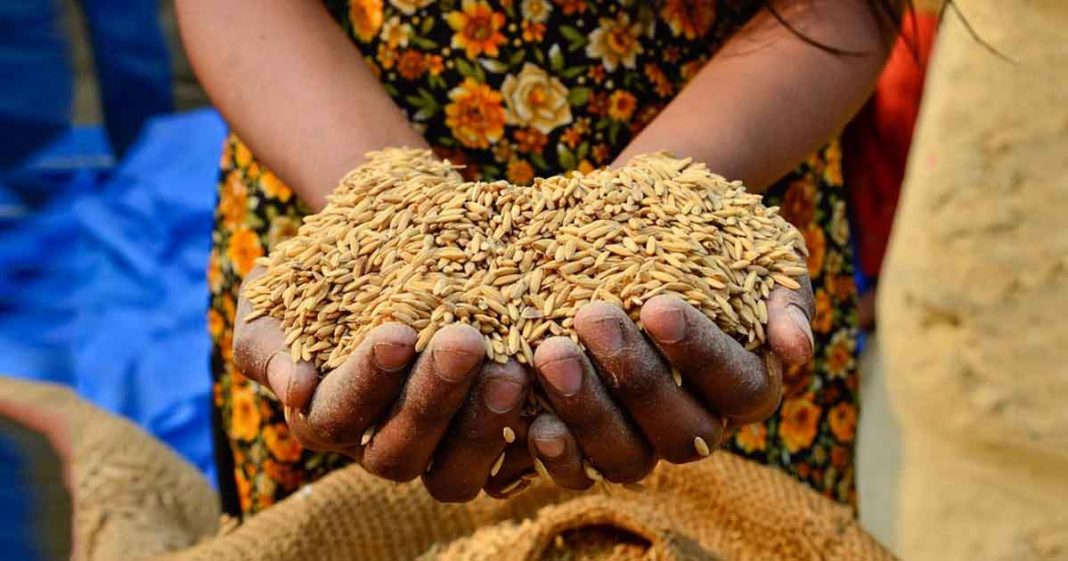Over the last few years, Pakistan has seen a drastic decline in the production of staple crops, such as wheat, rice and cotton, due to natural disasters, volatile security situation and low economic growth. As a result, the national nutrition survey 2018 points out that an estimated 37 percent of the population faces food insecurity.
In Pakistan, food availability is not the real problem – the real issue lies in affordability and inequitable distribution across the country that leads to price distortions, supply chain losses and inadequate availability in some districts. The situation is exacerbated for the vulnerable groups of women and children, and two-thirds of the population who live in rural areas that lack market access.
Read more: A collective response must for tackling malnutrition in country
In 2018, the government approved a comprehensive national food security policy, terming it the most critical element of national security. This policy aims to enhance food availability, improve food access, enable food utilization and ensure food stability by promoting a more sustainable food production and distribution system in Pakistan.
However, agriculture faces a complex set of challenges that limit its productivity and, thereby, hinder the goal of achieving food security. Some of these issues have been highlighted as follows:
Self-sufficiency in fertilizer production
Before 1980-81, Pakistan imported well over 50 percent of its annual fertilizer requirements. During the 1980s, the situation improved considerably after the expansion of the local industry; however, the country was still a net importer of urea till 2012. The Fertilizer Policy 2001 encouraged investments in new fertilizer plants by providing regionally competitive and fixed gas prices.
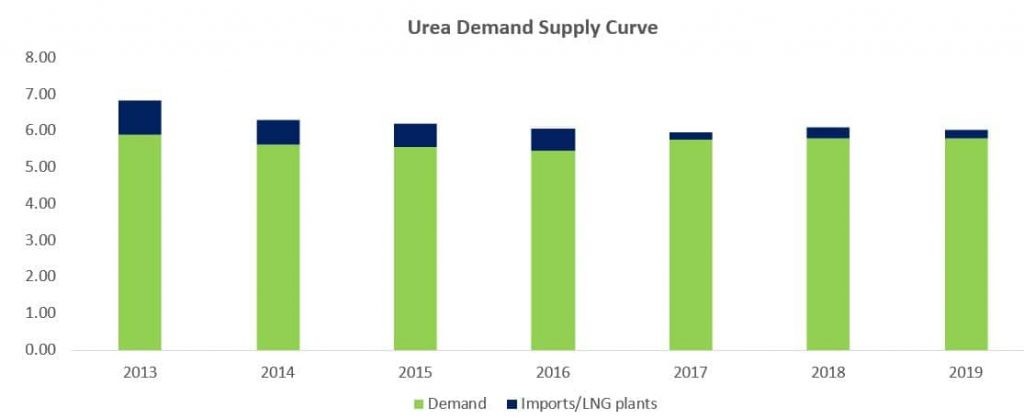
As a result, the local fertilizer players invested around PKR 162 billion in state-of-the-art production facilities, which led to an increase of around 1.9 metric tons per annum of urea production capacity. These investments enabled the country in attaining self-sufficiency of urea through production from indigenous gases and reduced the reliance on imports which also resulted in significant foreign exchange savings for the national exchequer.
Against a subsidy of PKR180 billion on lower feed gas price, the fertilizer sector has passed on a benefit of Rs 600 billion over the last decade to the farmer community in the form of reduced urea rates compared to international prices. Furthermore, the fertilizer sector is committed to making continuous investments for the reliable operations of these plants and utilizing the idle capacities to allow stable production of urea and contribute towards ensuring national food security.
Read more: Ehsaas program for the needy
Going forward, the government must make commercially viable decisions which support the national interest and provide to small farmers. The recent GIDC decision by the Supreme Court could be a setback for the fertilizers industry, along with other industrial sectors such as textiles, as it would be liable to pay huge sums (PKR 111 billion on non-concessionary gas and PKR 69 billion on concessionary gas, if applicable) even though the impact of GIDC was not passed on due to price intervention by the government.
Further, the GIDC payment over two years would put an immense financial constraint on the industry and jeopardize future investment plans of the businesses. In case GIDC becomes payable on concessionary gas as well, it would make urea price increase imminent that would directly impact the farmer community and agriculture sector of Pakistan.
The need for smart subsidies
According to the Pakistan Bureau of Statistics (PBS), around 10 percent of large landowners hold 52 percent of the agricultural land in Pakistan. As part of its 100-day agenda, the PTI government had envisioned a smart subsidy program to provide cheaper agricultural inputs to 3 million small scale farmers that own up to 5 acres of land and ensure food security with affordable prices for the country.
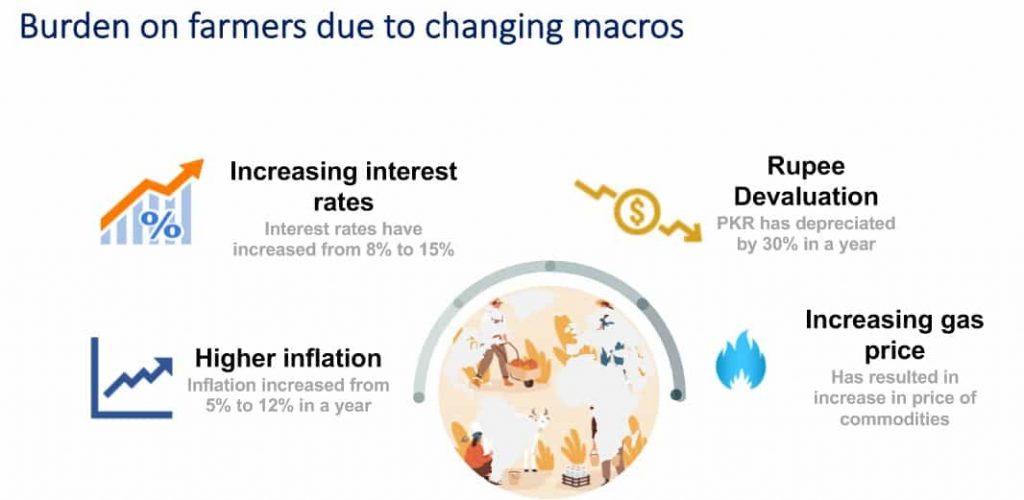
Currently, the government provides an across-the-board subsidy on urea produced using imported RLNG that disproportionately benefits the large landowners rather than small farmers who need it the most. As per calculations, the large landowners get 52 percent of across the board national subsidy, while the smallest farmers only get 19% of the government subsidy.
By introducing a sticker-based mechanism to roll out smart subsidy, as being already successfully done for phosphates in Punjab, the government can ensure that small subsistence farmers earn more and catalyze the growth of the agriculture sector. Through the smart subsidy mechanism, much higher discounts on urea to small and medium-sized landowners can be made possible.
Low crop yield and use of nutrients
Crop yields in Pakistan have considerably lagged behind our regional peers primarily due to usage of non-certified/substandard seeds, improper nutrients application, lack of mechanization and low agricultural research & development expenditure.
To ensure the availability and accessibility of food, Pakistan needs to boost yield per acre of crops, modernize agricultural practices and promote public-private partnerships for greater investments into research and development in the sector. One of the primary reasons behind the country’s lackluster crop productivity is the lack of application of phosphorus and potash fertilizers.
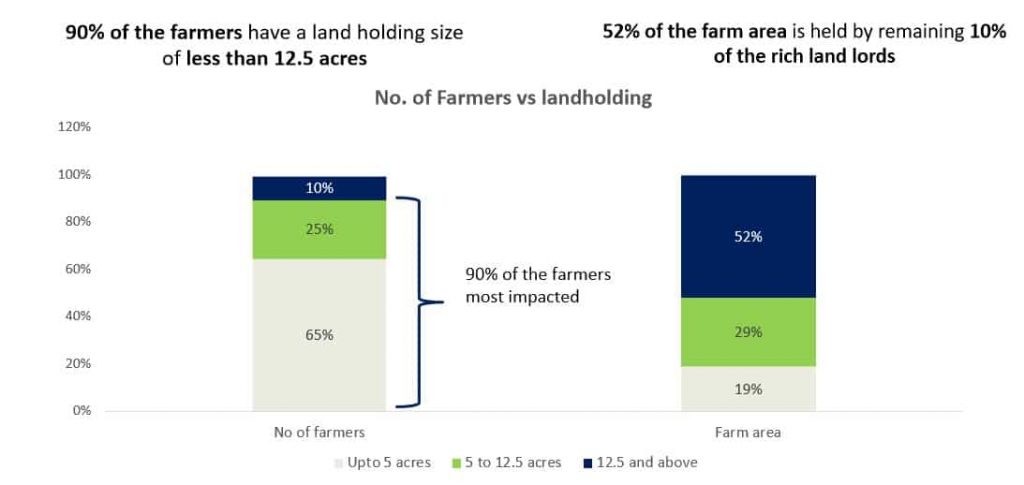
Experts have forecasted that with the use of balanced fertilizers, wheat productivity can be enhanced by 35% and maize by 40%. A report by the Food and Agriculture Organization (FAO) highlights the over-application of ‘Nitrogen’ by Pakistani farmers (77 percent of the total nutrient application) against a recommended rate of 57 percent.
While manufacturers like Engro Fertilizers have introduced fertilizers comprising Nitrogen (N), Phosphorous (P) and Potassium (K) in a balanced blended product (NPK), which is an optimal combination of the key nutrients required for soil health, there is a need to create greater understanding among farmers about the impact on agricultural productivity of these nutrients.
Read more: Pakistan’s Unusual and Unprecedented Food Inflation – What is driving it?
The Punjab government has previously implemented a targeted subsidy scheme for small-scale farmers to encourage the application of Phosphorous (P) and Potassium (K) fertilizers, which resulted in an increase in the use of these farm nutrients by 56 percent over the last couple of years. To promote balanced use of fertilizers and improve agricultural output, the subsidy should only be provided on Phosphate, Potassium and micro-nutrients products.
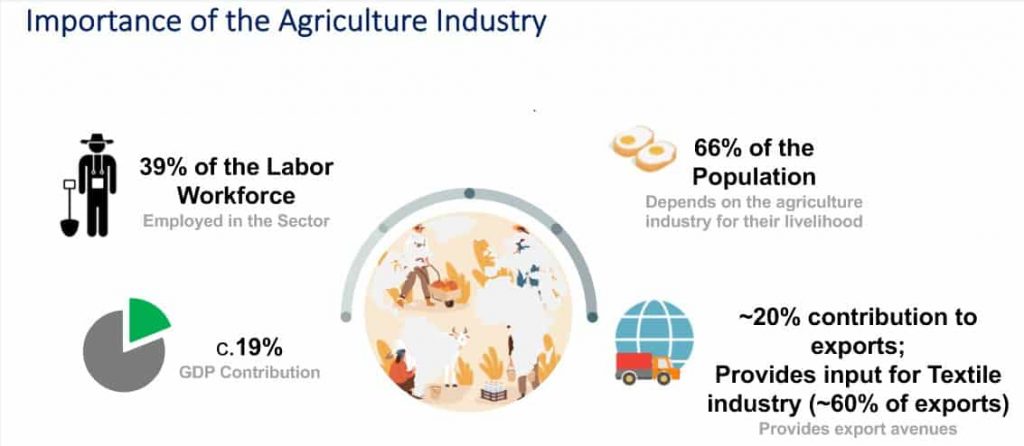
Earlier this year, the government had announced a subsidy package of PKR 37 billion on fertilizers. Based on the impact on agricultural productivity, the subsidy on Nitrogen-based products was rightly withdrawn, and it was decided to extend smart subsidy on Phosphatic (P) and Potassium (K) products only. However, the subsidy scheme is yet to be executed as there is a misalignment of provinces on the implementation mechanism.
Climate change
According to the latest Global Climate Risk Index ranking, Pakistan is the fifth most vulnerable country to climate change. Recent past serves as a good example of what is yet to come as temperatures are rising, rainfall and seasonal patterns are becoming increasingly unpredictable, and natural disasters of floods, droughts and heatwaves are now more common.
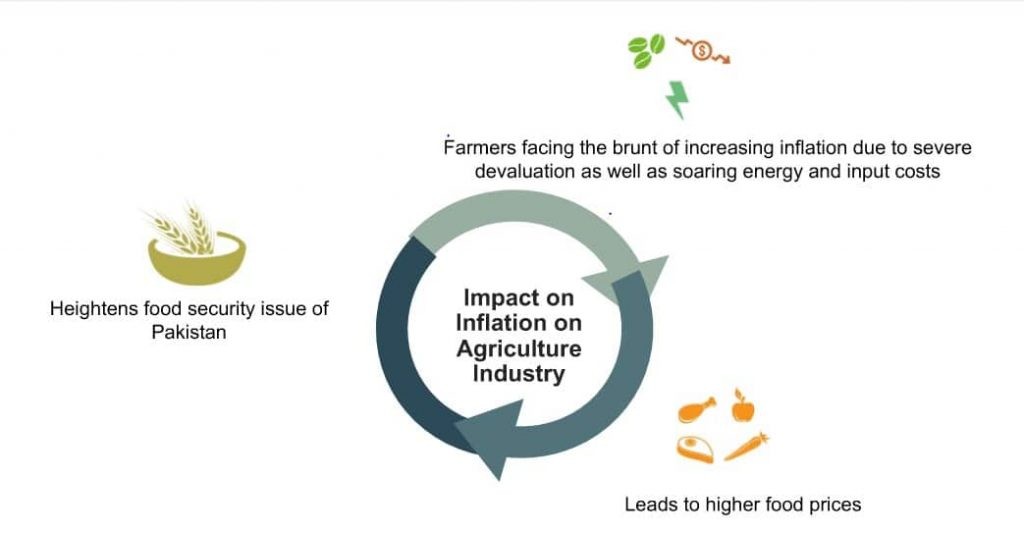
Climate change has increased water demand of crops by up to 30 percent while decreasing the yield by around 18 percent and pushing the prices of food higher. Small landholders, who account for more than 80 percent of the total farmers, are most susceptible to the way climate change is negatively impacting crops.
Therefore, policy measures by the government need to focus around limiting the impact of climate change as a foremost priority. While climate change is inevitable, adaptation strategies must be applied by bringing together knowledge and technology, developing institutional capacity and introducing policies that help sustain crop production.
Access to capital/credit
Small and medium-sized farmers in Pakistan have limited access to formalized agri-loans due to which they are encircled in a continuous debt trap at the hands of unorganized financing entities. Therefore, the issue of organized financial inclusion of small farmer needs to be looked at from a broader perspective because of its wider socio-economic implications.
Read more: Nestlé Pakistan’s report Creating Shared Value: Nestlé trains 220,000 children
The small farmers are heavily dependent on local arthis/middleman for credit availability due to reluctance of the formal sector and its cumbersome processes. However, it has been realized that without organized financial inclusion of these farmers, the agricultural sector of Pakistan will continue to experience low growth and this, in turn, would limit the country’s progress as well.
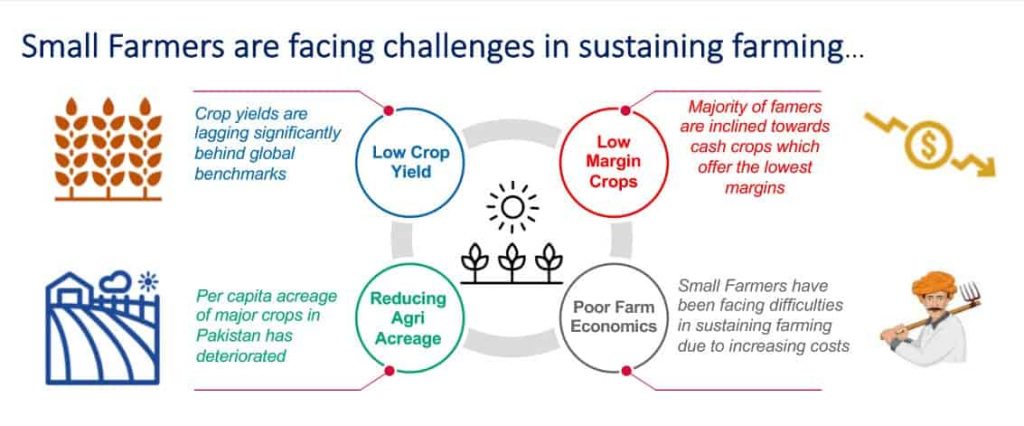
Financial inclusion and private sector participation in this endeavor must be based on financing across the entire ‘farm to fork’ value chain. There is a need for targeted, value chain aggregated projects and cooperatives to improve efficiencies and credit worthiness of small farmers, as seen from examples in Africa and India.
Collateral Management Companies (CMC) can help create an ecosystem that will improve warehousing and crop grading practices, provide credit access and price discovery mechanism to farmers and enable electronic trading of commodities. Technology should be leveraged to design e-credit and e-subsidies initiatives that can be supported by the private sector.
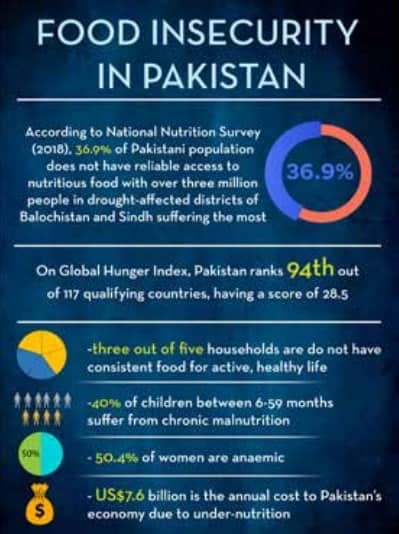
The future of food security in Pakistan depends on how well the government achieves its objectives outlined in the national food security policy. However, this would require strong coordination and trust between the provincial and federal governments.
Read more: Putting rural women on the path out of poverty
At the same time, the need of the hour is to engage with all stakeholders in the agricultural value chain and take rational decisions that promote investment and public-private partnerships for the overall well-being of small and medium-sized farmers.


